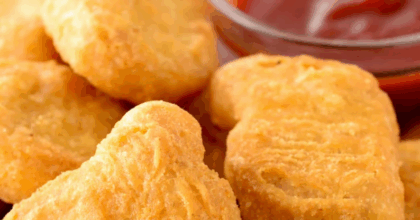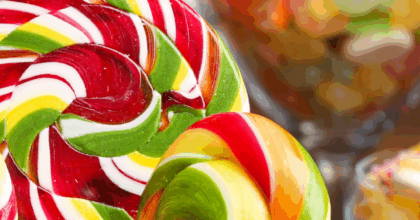Safety concerns haven’t slowed energy drink consumption for US parents
Nearly 60% of US parents consume energy drinks
Despite widely-known concerns about the safety of certain ingredients, energy drinks and shots are expected to remain popular with American consumers, primarily older Millennials (consumers age 27-37) who may be transitioning to parenthood. According to a new report, US Millennials increased energy drink consumption from 55 percent to 61 percent from 2014 to 2015, despite the fact that 74 percent of older Millennials express concerns about product safety compared to 65 percent of consumers overall. In an effort to counter these concerns, 81 percent of US consumers agree that companies should include recommended daily consumption limits on energy drink/shot packaging.
Despite all this, data shows that safety concerns have had little impact on consumers. While two thirds of all users (65 percent) worry about the safety of regular energy drinks/shots, it does not stop them from drinking the products. Only half of consumers drinking fewer energy drinks/shots agree they are concerned, compared to 68 percent who are drinking the same amount, and 41 percent are drinking more. In fact, consumption overall has diversified with many consumers (27 percent) drinking both regular and natural energy drinks/shots. This points to a growing popularity of natural claims in the category with 30 percent of users consuming natural energy drinks/shots.
“While there has been a movement, especially among Millennials, toward more natural ingredients, the energy drinks and shots market remains largely unaffected by changing consumer attitudes,” said Elizabeth Sisel, Beverage Analyst at Mintel. “The majority, a full 90 percent, of natural energy drink consumers also drink regular energy drinks. The steady consumption of both regular and natural energy products implies that US consumers may not perceive energy drinks as negatively as pop culture conveys.”
Lifestyle changes drive usage
Older Millennials are the core consumers of the US energy drinks/shots market, with 64 percent consuming energy drinks. While the same percentage of 18-26 year olds also consume energy drinks, older Millennials are increasing their consumption. Nearly one third of older Millennials (29 percent) consumed more energy drinks within the past three months compared to 22 percent who consumed less. This outpaces consumers age 18-26, of which only 16 percent reported consuming more and 27 percent said they drank less. Additionally, older Millennials strongly agree that energy drinks/shots are good substitutes for alternative caffeine beverages, including coffee (65 percent) and carbonated soft drinks (64 percent).
“Older Millennials are, more likely than not, going through a lifestyle shift, such as getting married or having children, including 55 percent of those age 30-34 with kids. As a result, their interests and priorities are shifting and individuals that require more energy are turning to energy drinks and shots,” Sisel continued. “However, this goes against the grain of most energy drink advertising, which focuses primarily on young, single consumers and their active lifestyles. Our data shows the older Millennial consumer segment displays more brand loyalty and potential for long term usage.”
Similarly, consumption rates of energy drinks/shots are higher than average among US parents. Households with children are significantly more likely to consume energy drinks (58 percent) and shots (48 percent) when compared to those without children (27 percent and 18 percent respectively). Among US parents, 68 percent of fathers and 38 percent of mothers consume energy drinks. Specifically, fathers increased their consumption rates by 28 percent, compared to only 21 percent who drank less. In contrast, only 34 percent of non-fathers and 22 percent of non-mothers consume energy drinks. Men may be the heavier consumers of energy drinks and shots overall, but the presence of children drastically increases consumption and strongly impacts usage by women. Mothers are not only heavier users than men without children (38 percent vs 34 percent), but they are also significantly more likely to drink energy drinks and shots than women without kids (22 percent).
Energy drinks are overwhelmingly more popular
Overall, the energy drinks/shots category saw 56 percent growth from 2009-2014, including a quick recovery from low sales gains in 2013 when the industry came under fire for ingredient safety. Mintel predicts the industry will continue to grow through 2019, increasing an estimated 52 percent from 2014-2019. While parents and Millennials show increases in consumption of energy drinks, they have decreased their consumption of energy shots, which points to why the energy shot segment is spiraling. Energy drinks comprise 89 percent market share, with the segment expected to grow 10 percent in 2015 to $10.8 billion. However, the energy shots segment is one-eighth the size and expected to decline in sales for the third consecutive year.
-
Discover your next big breakthroughGet smart fast with our exclusive market research reports, delivering the latest data, innovation, trends and strategic recommendations....View Reports
-
2026 Global PredictionsOur Predictions go beyond traditional trend analysis. Download to get the predictive intelligence and strategic framework to shape the future of your industry in 2026 and beyond. ...Download now
-
Are you after more tailored solutions to help drive Consumer Demand, Market Expansion or Innovation Strategy?Ask for a customised strategic solution from Mintel Consulting today....Find out more































